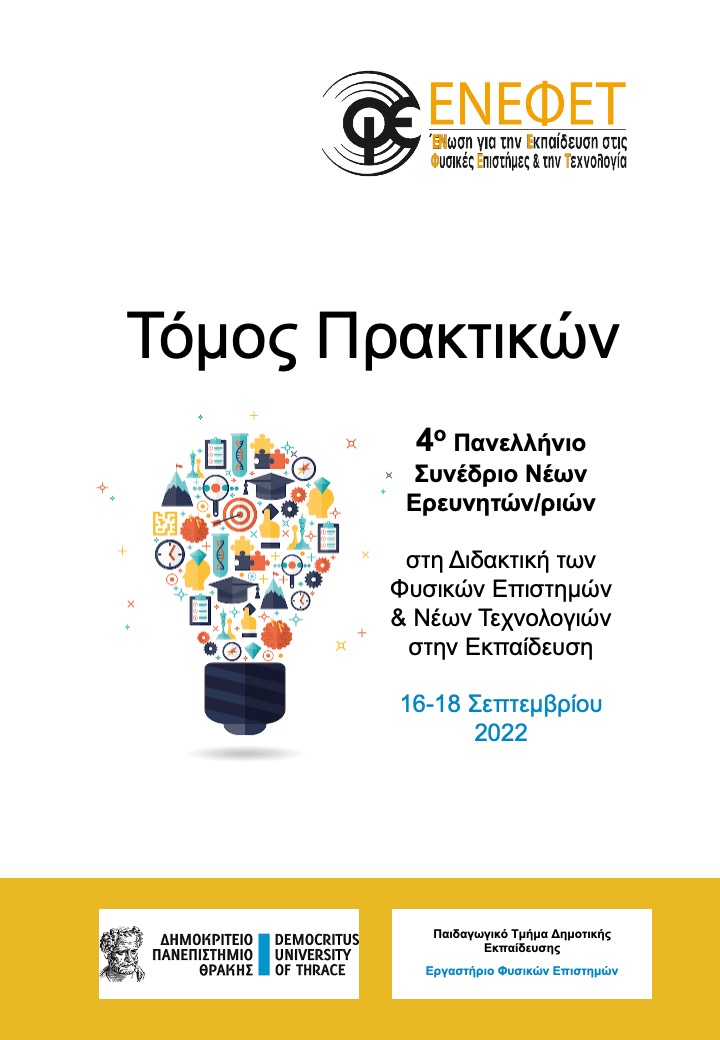Διερεύνηση των Διασυνδέσεων STEM Πεδίων σε Διδακτική Ενότητα Νανοτεχνολογίας από Μελλοντικούς Εκπαιδευτικούς

Περίληψη
Σε μια διεπιστημονική STEM διδασκαλία η αναγνώριση εννοιών και μεθόδων που παρουσιάζουν κοινή ταυτότητα αλλά και διαφορετική δομή στα επιμέρους επιστημονικά πεδία είναι καίριας σημασίας. Στην παρούσα εργασία θα παρουσιαστούν έννοιες, τεχνουργήματα και μέθοδοι που αναγνωρίζουν μελλοντικοί εκπαιδευτικοί ως διασυνοριακά αντικείμενα και τα χαρακτηριστικά αυτών σε μια STEM ενότητα Νανοεπιστήμης - Νανοτεχνολογίας που αναπτύχθηκε στα πλαίσια του ERASMUS+ προγράμματος “IDENTITIES”. Στην έρευνα συμμετείχαν δώδεκα μελλοντικοί εκπαιδευτικοί από τέσσερις χώρες (Ελλάδα, Ιταλία, Γαλλία και Ισπανία) με υπόβαθρο στα πεδία των Φυσικών Επιστημών, Μαθηματικών και Επιστήμης Υπολογιστών, οι οποίοι παρακολούθησαν ένα εβδομαδιαίο θερινό σχολείο για τη διεπιστημονική STEM προσέγγιση.
Λεπτομέρειες άρθρου
- Ενότητα
- Εργασίες Μεταπτυχιακών Φοιτητών και Φοιτητριών
- Κατηγορίες





